S'AGARÓ
An exceptional setting to relax and experience the relaxed Mediterranean life, benefiting from the most sophisticated services of this select urbanisation that has become synonymous with tranquillity and exclusivity.
The Costa Brava is home to a unique natural mosaic characterised by alternating steep cliffs, shimmering waters and peaceful coves.
Located in the municipality of the picturesque Castell d’Aro in Girona, S’Agaró Vell is a private area whose aspirations go beyond offering a residential environment with exceptional quality homes. What distinguishes this community is nothing less than its genuine philosophy of life, a unique and privileged way of experiencing the Mediterranean in its purest form.
As it is located on the slight promontory of Sant Pol, this sort of natural vantage point turns the site into a viewpoint from which you can admire both the exuberant natural environment of the surrounding area and an extraordinary panoramic view of the nearby towns of Platja d’Aro and Sant Feliu de Guíxols.

TRANQUILITY AND SECURITY
An exceptional setting to relax and experience the laid-back Mediterranean lifestyle, while enjoying the most sophisticated amenities of this exclusive development, which has become synonymous with tranquility and exclusivity.
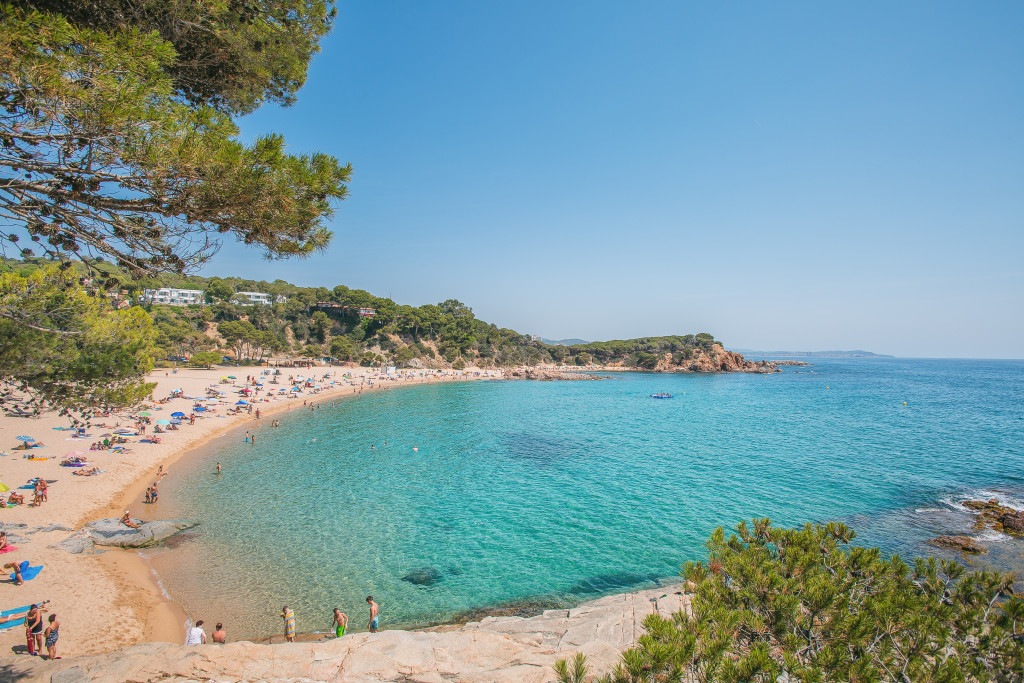
S’Agaró boasts one of the most outstanding locations on the Costa Brava. One of the main attractions of the urbanisation is that it is located on the beachfront, which means that the distinguished homes have direct access to a semi-private beach that can be reached on foot.
It is here that the dichotomy between sea and mountain is resolved in a majestic way on a canvas of pine trees and waves breaking on the rocks. A stroll to the beach or hiking through the pine forests along the Camino de Ronda – which, in addition to being a route that runs through a fascinating environment, ensures a very discreet access to each property – are just some of the various options for enjoying the splendid natural landscape that surrounds the urbanisation.
OUR HISTORY
In 1932, the Hotel de S’Agaró-Vell opened its doors. This hotel soon became a true landmark, not only in the urbanisation but also on the Costa Brava coast itself, and its relevance as a five-star hotel establishment has survived to the present day. Undoubtedly, another of the flagships of the area which, despite having only eleven rooms in its early days, reinforced the aura of exclusivity that can be breathed in S’Agaró. Luxury development in S’Agaró.
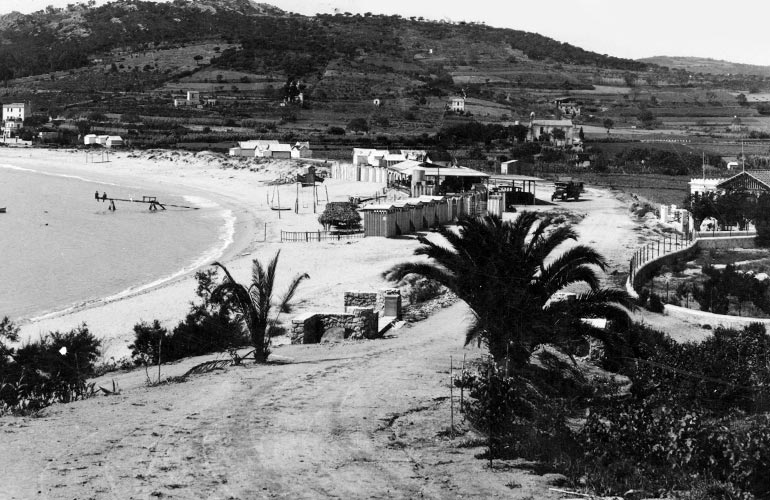
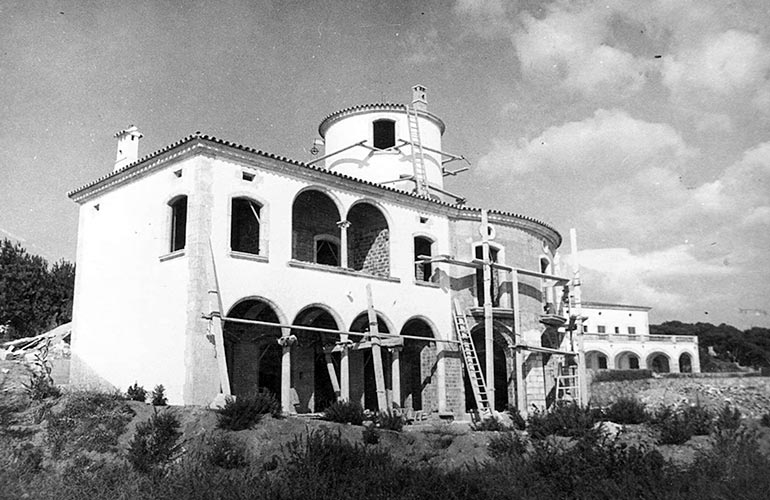
Another very important milestone for the devoted owners was the construction of a church within the urbanisation. The task fell to the expert hands of Rafael Masó, who used part of the cloister of the former convent of Sant Francesc de Giron to build the new church. This initiative may have been truncated by the authorities’ refusal to authorise the transfer of these remains, but if it finally went ahead it was due to Masó’s great zeal in preserving them. The consecration of the church to the Virgin of Hope was one of the first public events in the still young history of S’Agaró.
It was at this point in history, 1933, that events began to accelerate at a dizzying pace. Ensesa Gubert reached an agreement with Felip Masó Ferragut (a very active figure in the management of the Catalan area) to create the construction company that would henceforth promote the building projects on the estate. The architects Rafael Masó and Ramón Folguera soon joined the team. The number of houses increased significantly, always respecting the original principles. In this way, the community of owners expanded to accommodate all kinds of personalities, who came to S’Agaró attracted by the great fame that the complex was beginning to acquire.
‘Personalities from all over the world come to S’Agaró attracted by the great fame that the resort is beginning to acquire’.
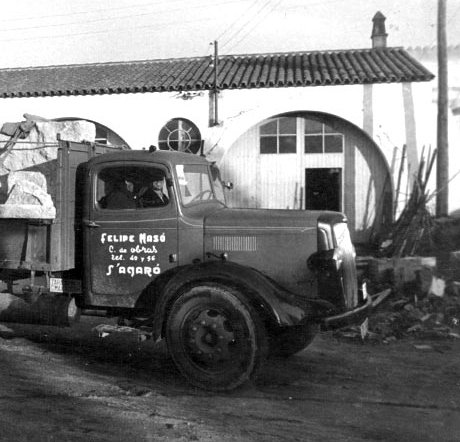
The outbreak of the Civil War brought work on S’Agaró to a complete standstill. Moreover, during the course of the conflict, S’Agaro Vell was occupied by some factions of the Republican army. Fortunately, there was no major damage to the facilities and this made it much easier to return to normality in the 1940s. This was a time when the country was going through an intense post-war crisis, with shortages of practically everything in a climate of pessimism. Once again, those responsible for urbanisation showed that they knew how to deal with all kinds of situations.
To ensure the continuity of the project, it was necessary to promote its existence so that, in a controlled manner, there would be a permanent interest in settling there. The publicity campaigns were very successful and various events were organised within the urbanisation to make it known. This was also the case from the 1950s onwards, which began precisely with a commemorative event for the 25th anniversary of S’Agaró. At first, excursions from Girona and Barcelona were also organised to attract more visitors. But the promotion was not limited to more conventional evenings. The people in charge of S’Agaró organised all kinds of events, some of which were as striking as horse-riding and tennis competitions.
“The publicity campaigns were very successful and various events were organised within the development to raise awareness of it”.
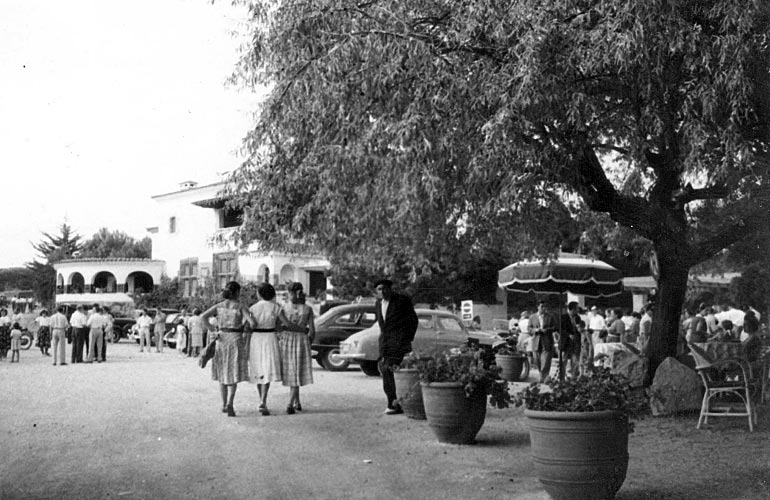
However, this practice was quickly banished in order to maintain the essence of the urbanisation, which in later years continued to host dinners, cocktail parties and galas. And to promote the Catalan culture of which the founders were so proud, there was also room for sardana dancing and other traditional festivities. The results of these initiatives far exceeded the most optimistic forecasts. In the 1960s and 1970s, in the wake of the country’s impressive economic boom, S’Agaró saw prominent personalities attend its most exclusive events. The Minister of Information and Tourism, Manuel Fraga, and the President of the French Republic, Vincent Auriol, were some of the solemn guests.
‘Even among the glamorous international stars, the charm of the development, its ambience and its surroundings was digested’.
Icons of the stature of Frank Sinatra, Ava Gardner, John Wayne, Sean Connery, Liz Taylor, Orson Wells or Lawrence Oliver paraded at some point through the beautiful gardens of the enclosure. The same can be said of Spanish celebrities such as the musician Xavier Cugat, the multifaceted – and Girona-born – artist Salvador Dalí, the mediatic bullfighter Luis Miguel Dominguín and the famous Catalan writer Josep Pla. Undoubtedly, S’Agaró had established itself as a point of reference for the most demanding visitors, but fortunately, this notoriety did not put an end to its tranquillity.
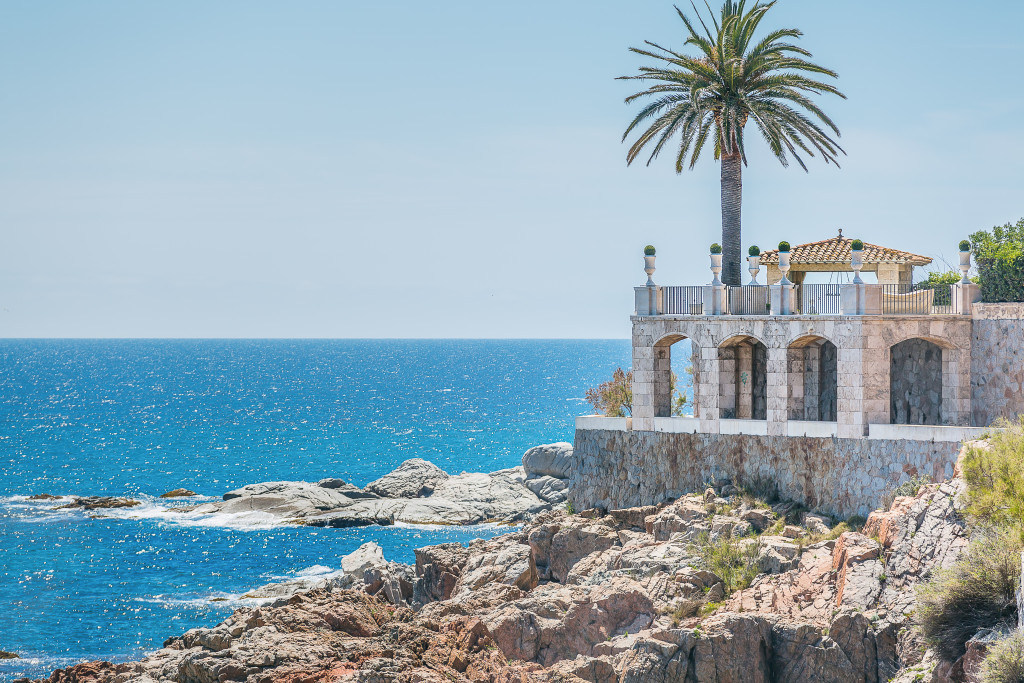
In recent decades, the urbanisation has reinforced its image as a place of rest and recreation with a high level of privacy and security. The landscape that captivated the pioneers who built the first chalet is still the same as the one seen by the fortunate owners who form the exclusive community of S’Agaró today. The houses have been built and refurbished to the most modern and functional standards, the roads have been improved and the services provided have been adapted to the new times. However, what remains unchanged is that select and elegant atmosphere that began to take shape almost a hundred years ago.
